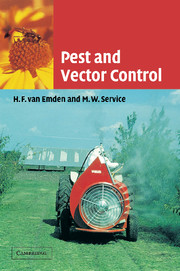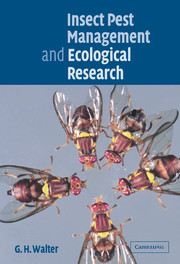Pest and Vector Control
As ravagers of crops and carriers of diseases affecting plants, humans and animals, insects present a challenge to a growing human population. In Pest and Vector Control, first published in 2004, Professors van Emden and Service describe the available options for meeting this challenge, discussing their relative advantages, disadvantages and future potential. Methods such as chemical and biological control, host tolerance and resistance are discussed integrating (often for the first time) information and experience from the agricultural and medical/veterinary fields. Chemical control is seen as a major component of insect control, both now and in the future, but this is balanced with an extensive account of associated problems, especially the development of pesticide-tolerant populations.
- Written by two of the best known entomologists in the world
- The first textbook to bring together agricultural pest control and human disease vector control
- Written in an easy, accessible style
Reviews & endorsements
"Some of [the book's] salient virtues...are brevity, authority, and price...Instructors should seriously consider this book for their introductory IPM courses. They and their students will be glad that they did." Julio S. Bernal
Product details
April 2006Adobe eBook Reader
9780511162350
0 pages
0kg
98 b/w illus.
This ISBN is for an eBook version which is distributed on our behalf by a third party.
Table of Contents
- Preface
- 1. Man and insects
- 2. The causes of pest and vectored disease outbreaks
- 3. Insecticides and their formulation
- 4. Application of insecticides
- 5. Problems with insecticides
- 6. Environmental/cultural control
- 7. Biological control
- 8. Insect pathogens
- 9. Genetic control
- 10. Pheromones
- 11. Plant and host resistance
- 12. Other control measures and related topics
- 13. Pest and vector management
- References
- Appendix: names of some chemicals and microbials used as pesticides.





